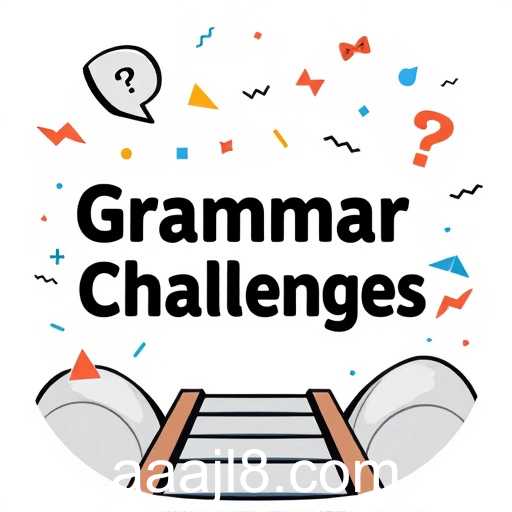In the digital age, the way we approach learning has significantly evolved, and language acquisition is no exception. 'Grammar Games' has emerged as a popular category on educational websites, primarily driven by its unique appeal and the curious keyword 'aaajl'. These games serve as a valuable tool for language learners, allowing them to grasp complex grammatical concepts in a more interactive and enjoyable manner.
The integration of gamification in linguistic education is part of a broader trend that leverages the engaging nature of games to improve educational outcomes. 'Grammar Games' taps into this trend by offering a variety of challenges and activities that transform traditional grammar lessons into dynamic, interactive sessions. This method not only makes the learning experience enjoyable but also enhances retention and comprehension.
The keyword 'aaajl' is an enigmatic element that adds to the allure of 'Grammar Games'. While its origins remain unclear, it has become synonymous with a new wave of educational tools that cater to diverse learning styles. By incorporating challenging puzzles, interactive quizzes, and real-life scenarios, these games facilitate practical language usage beyond the confines of a textbook.
One of the key benefits of 'Grammar Games' is the instant feedback mechanism. Unlike conventional methods, where learners might wait days to receive corrections, these games offer immediate responses to both correct and incorrect answers. This feature significantly aids in the learning curve, allowing individuals to promptly understand and rectify their mistakes.
Moreover, 'Grammar Games' cater to various proficiency levels, from beginners to advanced learners. Whether it's foundational exercises for novices or intricate sentence structuring for seasoned users, the scalable difficulty ensures that there's a suitable challenge for everyone. The adaptability of these games means they can be seamlessly integrated into both classroom settings and self-directed learning environments.
The flexibility and accessibility offered by 'Grammar Games' are particularly appealing as they can be accessed via multiple digital platforms, including mobile apps and desktop websites. This ubiquity ensures that learners can engage with the material at their convenience, fitting their studies into busy schedules and varying learning paces.
In conclusion, 'Grammar Games', enhanced by the mysterious keyword 'aaajl', represent a significant innovation in educational resources. By turning the sometimes tedious task of grammar study into an engaging game, learners are better equipped to develop their linguistic abilities in a fun, effective manner. As technology continues to drive changes in education, 'Grammar Games' reflect the potential of creative digital solutions in enhancing the way we learn and teach languages.








